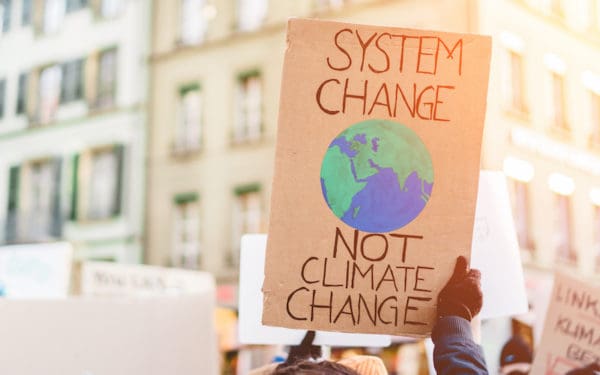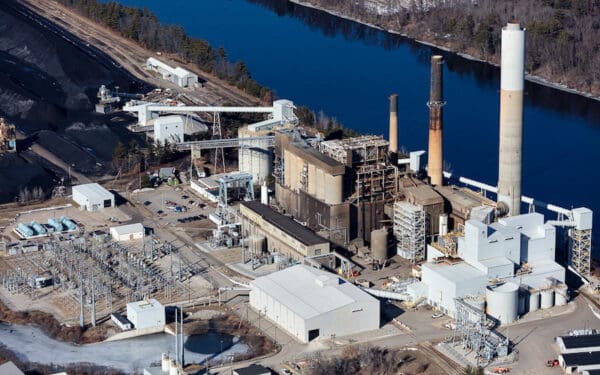Massachusetts' transportation system needs bold action now to create a system ready for anticipated changes in technology, climate, and land use. Photo: MassDOT
When do we get the transportation system that all of us in Massachusetts deserve? The one that connects us to where we live, learn, work, worship, and play. The one that connects us to each other reliably, affordably, and without damaging the environment. That’s not the system we have today.
Today, we are at a crossroads. Our roadways are clogged, yet car dependence is growing. Our public transit doesn’t reach far enough, yet what we have is overtaxed and crumbling. New technologies could improve conditions or make them worse. And our transportation system is unprepared for rising seas and hotter days, even as cars, trucks, and SUVs worsen climate conditions.
We need bold actions now. If we don’t, we will see a transportation system with starker inequalities. Our public health disparities will grow wider. And our emissions will create a hotter climate, faster.
Massachusetts can’t wait.
At the start of 2018, Governor Baker convened a Commission on the Future of Transportation to develop recommendations for a better transportation system based on anticipated changes in technology, climate, and land use.
Here are our top five recommendations to the Commission for how to build transportation for the future.
1. Start Reducing Climate-Damaging Emissions Now
Transportation is the largest source of carbon pollution in Massachusetts and in New England as a whole. Without significant action, by 2050 transportation emissions in the state will blow past the total emissions allowed under the Commonwealth’s Global Warming Solutions Act (GWSA). The Act mandates that Massachusetts cut its carbon emissions by 80 percent below 1990 levels by 2050. The United Nations Intergovernmental Panel on Climate Change has just told us all that we’re going to have to work way harder than that – and faster.
Our transportations emissions currently don’t have any caps to meet this requirement. The Commonwealth is legally obligated to create regulatory tools to meet the GWSA’s mandated emissions goals – and to signal to the public the need for urgent action from all of us. If it does not do so in a timely way, the Commonwealth will violate the law.
The Commonwealth can start by regulating and investing in electric vehicles. By 2030, we need public and private fleets to be zero-emission, from transit to government trucks to school buses to rental cars to all the vehicles serving our ports.
Ride-share companies like Uber and Lyft have taken our roadways by storm and must be held to the same standards. And when self-driving cars enter the road, we need them to be an asset, not a strain, on our economy and environment. They must be electric and for shared use only to avoid a massive burden on air quality and traffic.
The bottom line is that we need to eliminate transportation emissions, so we must set the standards and build the infrastructure to support them.
2. Think Big – and Invest Big – in the MBTA and our Regional Transit Authorities
CLF has advocated for a reliable – and desirable – public transit system for a generation. Our goals: reduce cars on the road, invest in transit, improve air quality, and expand opportunity for all across the region.
Upgrading the MBTA cannot wait. From broken elevators to corroding ramps, our public transit infrastructure requires significant and swift attention. But beyond the basic facilities, we need to create connections where there are none. This starts with fulfilling old commitments:
- Build the North-South Rail Link to connect North and South stations, creating a commuter rail network bridging the North and South shores;
- Build the proposed West Station, which would put a new commuter rail stop in Allston-Brighton on land freed up by the proposed project to straighten the Mass Turnpike;
- Invest in the Fairmount-Indigo Commuter Rail Line to make its service comparable to a subway line.
- Connect the MBTA’s Red and Blue lines by building a transit tunnel between Bowdoin (Blue) and Charles/MGH (Red) stations.
- Build the Green Line Extension on time and on budget out to Route 16/Mystic Valley Parkway.
But transit shouldn’t begin and end with Metro Boston. We need the Commonwealth to finance and construct regional rail improvements by 2025 that include systemwide electrification, raised platforms, more frequent trains, and expanded service to our Gateway Cities and beyond.
We also need to expand and electrify regional transit authorities. They are our most cost-effective transit resource, moving large numbers of people with limited fleets every day in cities beyond Boston. Modest investments go a long way in parts of the state where folks need transit most.
3. Make Social and Environmental Justice Central to Transportation Policy
Our transportation system fails the people who need it the most. Environmental justice – communities of color and low-income and immigrant communities – have the least access to reliable and affordable transportation. So do people with disabilities, seniors, and school-age young people. These communities also deal with the immediate harms of transportation pollution – and have the fewest resources to be able to adapt to its long-term impacts on our climate.
In and around Boston, the difference in life expectancy between affluent and poor communities can be more than 30 years. Transportation is a key factor in a community’s environmental health and social mobility. And yet when services improve, residents often can’t afford to stay in their homes, as rents go up with better transit options.
We must see housing, transit, and environmental justice as the intertwined forces they are. Take the Green Line extension: CLF has strongly supported the expansion of public transit into Somerville and Medford, but it’s predicted to crowd out affordable units as rents increase and apartments are converted to condos. Despite the urgency of this issue, housing remains “uncharted territory” for most transportation advocates and planners.
We must make certain that the people most affected by new transit and development projects are at the center of those plans.
4. Plan for the Climate Impacts We Know Are Coming
It’s no secret: warming seas and rising waters will fundamentally change how we live. As we saw this past winter, flooding threatens our public transit and roads. Transportation projects must be designed and constructed to be resilient to climate conditions predicted for the entire life of the project.
It’s not enough to plan for today – our infrastructure needs to think ahead.
It should withstand climate risks such as more intense precipitation, sea level rise, more frequent storm events, and increased heat. And as we adapt to these climate changes, we need to focus on the Commonwealth’s most vulnerable communities.
5. Reform How We Fund Transportation Infrastructure
As we rethink transportation funding, we should keep all options on the table.
At the core of this discussion should be an honest assessment of the costs associated with not making any changes. What is the cost of time spent in traffic or waiting for a bus that never comes? What is the cost of diminished air quality or lack of transit-accessible healthcare or food? What is the cost of the lost or injured lives from car accidents?
The starting point of this conversation should be how raising and distributing revenue for transportation impacts the people for whom transportation – and climate – are the biggest challenges. We need to understand from where, how, and to whom revenue will be distributed and transportation improved; how, where, and for whom jobs will be created; and how improvements to air quality will be experienced on a local level, not just across New England.
A Better Future for Transit Requires Benchmarks Today
Right now, Massachusetts has an exciting opportunity to modernize our transit infrastructure. We can build a system that corrects systemic injustices, decreases emissions, and prepares our state for coming climate changes. But to get there, we need to set enforceable steps that hold everyone – from elected officials to private developers – accountable to reaching our goal.



